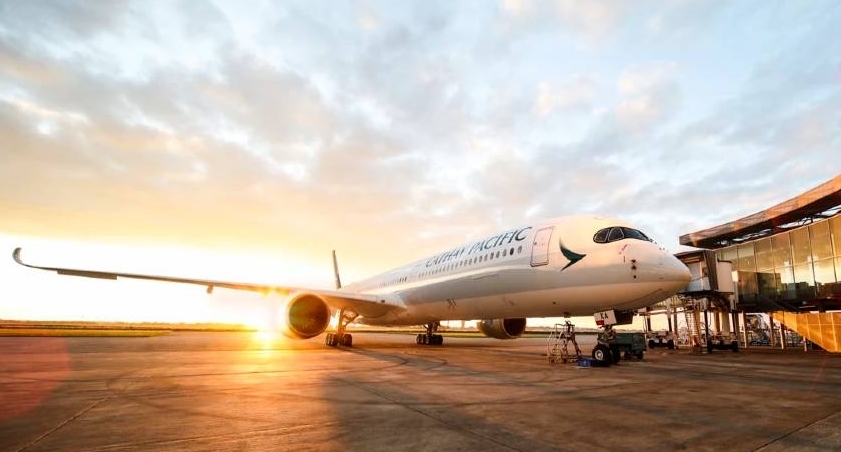Cathay Pacific Group posts 43.1% decline in June cargo volumes
The Cathay Pacific Group released combined Cathay Pacific and Cathay Dragon traffic figures and cargo performance for June 2020.

July 18, 2020: The Cathay Pacific Group released combined Cathay Pacific and Cathay Dragon traffic figures and cargo performance for June 2020. The two airlines carried 93,228 tonnes of cargo and mail last month, a decrease of 43.1 percent compared to June 2019.
Cathay Pacific continued to operate a full freighter schedule as well as chartered flights from its all-cargo subsidiary, Air Hong Kong, in June. There were fewer cargo-only passenger flights compared with May.
Cathay Pacific Group chief customer and commercial officer Ronald Lam said, “Despite a mild pickup in general airfreight movements, our cargo tonnage fell by 5 percent month-on-month as demand for medical supplies waned following a peak month in May. The reduction of long-haul carriage from the Chinese mainland and Hong Kong made way for movements from Southeast Asia and the Indian sub-continent as local lockdown measures eased.”
“Meanwhile, the improvement in inbound Hong Kong loads and network support led to a higher load factor, which increased 11.7 percentage points year-on-year to 74.5 percent. Yields came down following the significant rise seen in May,” he said.
Cathay Pacific and Cathay Dragon carried a total of 27,106 passengers last month, a decrease of 99.1 percent compared to June 2019. The month’s revenue passenger kilometres (RPKs) fell 98.8 percent year-on-year.
The two airlines carried 93,228 tonnes of cargo and mail last month, a decrease of 43.1 percent compared to June 2019. The month’s revenue freight tonne kilometres (RFTKs) fell 35.8 percent year-on-year. The cargo and mail load factor increased by 11.7 percentage points to 74.5 percent, while capacity, measured in available freight tonne kilometres (AFTKs), was down by 45.9 percent. In the first six months of 2020, the tonnage fell by 31.9 percent against a 31 percent drop in capacity and a 24.6 percent decrease in RFTKs, as compared to the first-half period for 2019.
Lam said, “The landscape of international aviation remains incredibly uncertain with border restrictions and quarantine measures still in place across the globe. Although we have begun to see some initial developments, notably a slight increase in the number of transit passengers following the easing of transit restrictions through Hong Kong International Airport, we are still yet to see any significant signs of immediate improvement.”
“We observed a gradual pickup in connecting passenger demand as the ban on transit traffic through Hong Kong International Airport began being partially eased. Towards the end of the month, transit traffic reached about 32% of overall traffic, with notable demand from destinations in Southeast Asia such as the Philippines and Vietnam to North America. This change in traffic mix meant a more tapered average yield performance though,” he stated.
Earlier this week, Cathay Pacific’s shareholders passed the resolutions pertaining to the company’s HK$39 billion recapitalisation plan. The management team is moving forward with a comprehensive review of all aspects of the group’s operations and will make its recommendations to the board on the future size and shape of the airlines by the fourth quarter.
Lam said, “While some markets are starting to relax border restrictions and quarantine requirements in July, we remain cautious and agile in our approach to resuming our passenger flight services. We have adjusted our overall capacity for July to approximately 7 percent, which remains subject to the potential further relaxation or tightening of government health measures. We expect that our airlines will operate up to 10 percent of the normal flight schedule in August and will continue to assess the potential of increasing more flights and adding destinations for our customers in the coming months.”
In its 2019 annual results announcement dated March 11, 2020, the group had disclosed that it expected to incur a substantial loss for the first half of 2020. The directors of Cathay Pacific Airways estimate that for the six months ended June 30, 2020, the group will record a net loss attributable to shareholders of approximately HK$9.9 billion, which compares to a net profit to shareholders of HK$1.3 billion for the same period in 2019.


